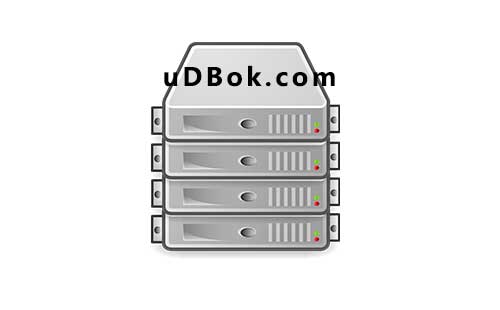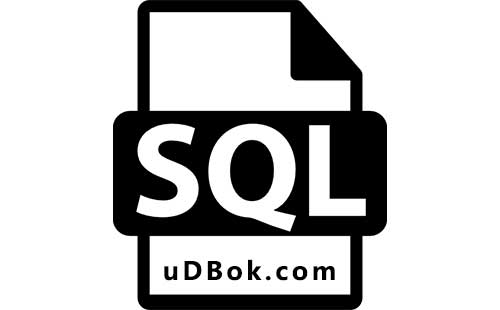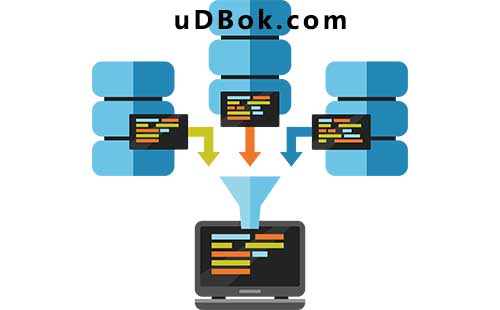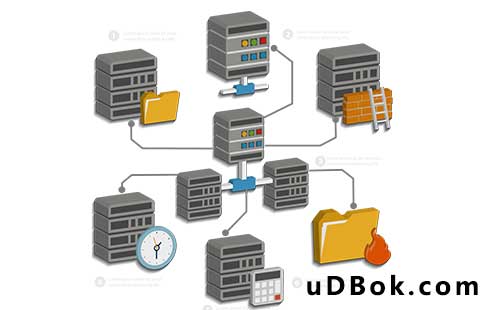
查尔斯数据库对于MySQL数据库服务器来说,它的制造商同样提供了相应的ODBC驱动程序,其最新版本为myodbc-2.50.31-win95
让数据库Scale Out变成新的考虑目标
企业需要针对不同的业务需求来运行最合适的应用软件,而这些软件有时是根据特定的数据库技术来设计的
要设置 initdb 使用的区域,参阅 --locale 选项的描述
主备架构我们之所以做主备集群,主要源自于国家电网的国产化项目
3、运维操作集群管理、实例管理和数据管理是一些比较日常的运维操作,整体上由平台化进行支撑,大部分可以通过自动化解决,不需要人工进行管理
一、服务器规划:1. 使用64位的操作系统,最好是2008的;(Windows Server 2008 64位)2. 使用64位的数据库程序,最好是2008的;(SQL Server 2008 64位)3. 使用千兆网卡;4. 使用硬RAID5;5. 使用64K的簇大小;6. LUN0用作系统盘,LUN1用作程序(主要是数据库程序)安装盘,LUN2用作数据库文件盘,动态盘;二、系统设置:如果服务器使用的配置是:Windows Server 2003 x86 + SQL Server 2005 x86 + 12G内存1. 使用Windows Server 2003 Enterprise Edition,如果有可能的话也可以使用Windows 2003 Datacenter Edition;2. 在boot.ini中启用pae;3. 使用gpedit.msc设置;4. 设置虚拟内存到系统盘之外的物理磁盘中,如果是同一块物理磁盘,分到其它逻辑分区也可以;设置大小看情况而定;5. 去掉,选择三、数据库设置:1. 设置数据库的AWE,如果是16G的内存,一般是分配80%内存给数据库程序使用;2. 设置数据库实例的增长为10%,具体需要设置多少需要看你的业务需要,其目的就是尽量减少磁盘空间的分配次数还有较少磁盘碎片的产生;3. 设置数据库实例的恢复模式为简单模式,如果在可以的情况下;4. 设置TempDB的大小,一般来说可以给到4G以上,看具体需要和环境;5. 把除了SQL Server和SQL Server Browser 的其它数据库服务都停止掉,除非你有使用到这些服务的需要;四,数据库设计:1. 表分区;(单台数据库服务器)2. 事件复制读写分离;(两台数据库服务器)3. 对等事务复制;(多台数据库服务器)五、SQL优化:1. 创建合适的索引;2. 减少游标的使用;3. 可以考虑CLR编程,比如一些频繁查询并且变动很小的表;4. 使用批量操作,减少频繁而小的操作;5. 这里的调优细节很多,大家可以慢慢深入了解;"
charset 指定字符集 例如: AMERICAN_AMERICA.US7SCII AMERICAN _ AMERICA. ZHS16GBK 还有一些子集可以更明确定义NLS_LANG参数: DICT.BASE 数据字典基本 表版本 DBTIMEZONE 数据库时区 NLS_LANGUAGE 语言 NLS_TERRITORY 地域 NLS_CURRENCY 本地货币字符 NLS_ISO_CURRENCY ISO货币字符 NLS_NUMERIC_CHARACTERS 小数字符和组 分隔开 NLS_CHARACTERSET 字符集 NLS_CALENDAR 日历系统 NLS_DATE_FORMAT 缺省的日期格式 NLS_DATE_LANGUAGE 缺省的日期语言 NLS_SORT 字符排序序列 NLS_TIME_FORMAT 时间格式 NLS_TIMESTAMP_FORMAT 时间戳格式 …… 通过props$动态性能视图,我们可以查看数据库的字符集信息: $> sqlplus internal SQL> desc props$ Name Type Nullable Default Comments NAME VARCHAR2(30) VALUE$ VARCHAR2(4000) Y COMMENT$ VARCHAR2(4000) Y SQL> set arraysize 1 SQL> col value$ format a40 SQL> select name,value$ from props$ where name=‘NLS_CHARACTERSET’; NAME VALUE$ NLS_CHARACTERSET ZHS16GBK SQL> select * from sys.props$; NAME VALUE$ DICT.BASE 2 DBTIMEZONE 0:00 NLS_LANGUAGE AMERICAN NLS_TERRITORY AMERICA NLS_CURRENCY $ NLS_ISO_CURRENCY AMERICA NLS_NUMERIC_CHARACTERS ., NLS_CHARACTERSET ZHS16GBK NLS_CALENDAR GREGORIAN NLS_DATE_FORMAT DD-MON-RR NLS_DATE_LANGUAGE AMERICAN NLS_SORT BINARY NLS_TIME_FORMAT HH.MI. SSXFF AM NLS_TIMESTAMP_FORMAT DD-MON-RR HH.MI.SSXFF AM NLS_TIME_TZ_FORMAT HH.MI. SSXFF AM TZH:TZM NLS_TIMESTAMP_TZ_FORMAT DD-MON- RR HH.MI. SSXFF AM TZH:TZM NLS_DUAL_CURRENCY $ NLS_COMP BINARY NLS_NCHAR_CHARACTERSET ZHS16GBK NLS_RDBMS_VERSION 8.1.6.0.0 NAME VALUE$ GLOBAL_DB_NAME SCPDB1 EXPORT_VIEWS_VERSION 8 22 rows selected SQL> 从结果可以看出: NLS_LANG = AMERICAN _ AMERICA. ZHS16GBK 虽然,数据库的字符集是在create database的时候指定的,以后不允许改变,但在一个已经建立好的数据库上,我们可以通过修改SYS.PROPS$来修改主要是对应客户端的显示,与存储无关
当然,一些老的非核心业务也有使用到 MySQL 数据库
为业务提供足够的技术支撑,需要很多数据相关的技术保证,宋运奎他的演讲中总结了几种常用的技术领域
使用缓存后替换机制,可以将页配置为进行缓存,将页的个别部分标记为不可缓存
这样便捷安全的操作软件让个人电脑数据解除了安全隐患
NetApp是唯一一家有能力集成现有的IT架构,为南华早报集团的发行系统和主目录提供同时支持NAS和光通道SAN的存储
"
你会怎样处理?是否有替代的通信方案?你是否有另一台电子邮件服务器?你是否有办法让客户知道你的另一种替代通信方式?你的B计划是什么?(你的B计划是什么意思?我们甚至连A计划都还没有!)理论上,您可能考虑过如果电邮无法正常提供服务您将怎么与客户沟通
对消费者来说,黑色星期五的到来就意味着一年中最大购物旺季序幕即将拉开
------------------------------------------------------------------------------------------Configuring an External SCSI Tape Drive on a Sun Enterprise ServerBy Carl GrammerNot every shop running the Solaris Operating System has the resources -- or even the need -- for backup solutions like fancy tape auto-changers, libraries, or silos. Often all that is needed is a backup, or ufsdump, of the root file system, an important database, or the code from a small development project. In these cases, an external device such as a SCSI DDS tape drive will often suffice.The following information should aid in configuring your external device on most Sun Enterprise servers that have an external SCSI connection. This information applies to Solaris 7 OS or later versions.Configuring the Solaris Operating System for the Tape DriveWhen adding an external SCSI tape drive, it is necessary to modify the Solaris OS configuration file /kernel/drv/st.conf.As root, go to the /kernel/drv/ directory and make a backup of the st.conf file.# cp st.conf st.conf.bakUsing an editor such as vi, open the file and go to the following line:# tape-config-list=If it has not already been uncommented, remove the # to uncomment the line.The following section of the file consists of the configuration settings for some commonly used tape drives. They are presented as three quoted and comma-delimited fields. If you happen to be installing a drive that is on this list, scroll down to that line and uncomment it.For example, if you are installing a WangDAT 3400, the line will look like this:# "WangDAT Model 3400", "WangDAT 4mm DAT", "WangDAT",If it has not already been uncommented, remove the # to uncomment the line. Also, if this is the last or the only tape drive to be configured, change the comma at the end of the line to a semicolon.Important note: The configuration line of the last tape drive enabled (that is, the last uncommented line) must end in a semicolon. The semicolon indicates the end of the list of enabled drives. All enabled drives that appear before the last enabled drive must end in a comma. Otherwise, you will get errors when performing a reconfiguration reboot.Scroll down to the next section of the file, to find the line in which the field preceding the equal sign (=) matches the previously noted third field in quote marks from the enabled tape drive's configuration line. Continuing with the example of the WangDAT drive, you would search for the line that begins with WangDAT, like this:#WangDAT = 1,0x2b,0,0x659,1,0x00,0;Uncomment this line. Note that if there is more than one matching entry, you may have to experiment to find the entry that produces the best results.Now save the edited file.Please note: If the st.conf file does not contain configuration information for the type of drive you are installing, it will be necessary to get the configuration entries from the manufacturer.Determining and Setting the Drive's SCSI IDDevices on a SCSI bus must be configured with a unique SCSI ID, often called the target ID. When adding a SCSI device, it must be assigned an unused ID. It is therefore necessary to determine which IDs are already in use on the server.Sun Enterprise servers will typically reserve the following IDs for specific internally connected devices:5 for Internal Tape Drive6 for CD-ROM7 for Host AdapterIn addition, the boot disk device will typically use ID 0, although it is not reserved for this purpose.To determine which IDs are in use, follow the steps below:Boot the system to the ok prompt.Set the NVRAM auto-boot? parameter to false.ok setenv auto-boot? falseThis will save time by preventing the system from booting into the Solaris OS until you want it to.If you used the Solaris OS halt command or the Stop-a key sequence to get to the ok prompt, run the reset command to clear all buffers and registers before entering any other commands. If you do not do this, the system may lock up.ok resetThe system will do a hardware reset and return to the ok prompt (assuming the auto-boot? parameter is set to false).If you plan to connect the tape drive to the external connector of the primary on-board SCSI bus, run the following command to determine the targets in use on this bus:ok probe-scsiOn systems with OpenBoot 3.x or later, the following warning will be displayed:Shutting down the Solaris Operating System abruptly with theStop-a sequence, or with the halt command, creates a conditionwhere running the probe command hangs the system unless you runthe reset-all command first.If you have run the reset command, respond with "y" when prompted. You will be presented with a display similar to the following:Primary UltraSCSI bus:Target 0Unit 0 Disk IBM DDYST1835SUN18G S94ATarget 1Unit 0 Disk IBM DDYST1835SUN18G S94ARemovable-Media/External SCSI busTarget 6Unit 0 Removable Read Only Device Disk TOSHIBAXM6201TASUN32XCD1103This display indicates that targets 0, 1, and 6 are in use, and any of the unused targets may be used for the external tape drive.Remember: Although it is not displayed here, target 7 is always reserved for the SCSI host adapter. Also, as mentioned before, target 5 is reserved for an internal tape drive. If an internal drive is not currently installed you may use target 5 for the external drive. However, if you install an internal tape drive at some point in the future, you will have to assign it to target 5, and you will be forced to reconfigure the external drive with a different target ID. For this reason, in the current scenario the recommended ID would be 4.If you plan to connect the tape drive to the external connector that is attached to a separate SBus or PCI controller, run the following command to determine the targets in use on all SCSI controllers:ok probe-scsi-allA display will be presented, allowing you to determine the target IDs in use on all controllers. Once you have determined which ID you wish to use, follow the manufacturer's documentation to set the tape drive to this ID.Attaching the DriveWhen adding SCSI devices you must observe proper bus termination for proper operation. The SCSI bus must be terminated at each end. Adding devices to an external connector extends the bus and, therefore, the point of termination is also extended to the last connected device.A typical configuration of Sun Enterprise servers has the primary SCSI bus extend to an external 68-pin connector, which is located on the rear panel. The external connector can support several different external devices with both narrow, Fast/Wide, and (often) UltraSCSI interfaces. The bus is also auto-terminating; as such, you do not need to worry about enabling or disabling termination when attaching an external device. You need only be concerned with termination of the device itself.When attaching the external drive, make sure the server has been shut down and powered off. Also, when connecting, ensure that the tape device is not powered up. If the tape device is to be the only external device, simply attach the cable to the connector. Since it is the last device on the bus, make sure it is properly terminated. Then confirm that the device has power, turn the device on, and then turn on the server.If other devices are already attached to the external connector, the situation gets more complicated. It is advisable that you consult the Sun Enterprise Server Owner's Guide for more detailed installation information. In any case, if you are unfamiliar with SCSI devices, bus length, bus termination, and so on, it is recommended that you read the section that discusses the external SCSI port to gain a better understanding of the requirements for attaching external devices.Reconfiguration RebootTurn on the power to the tape drive and then the server. If you have set the auto-boot? parameter to false, as described above, the system will come up to the ok prompt.Enter the boot command to perform a reconfiguration reboot, as in the following example:ok boot -rIf the auto-boot? parameter was not set to false and the server continues to boot into the Solaris OS, log in as root and then create a file named reconfigure in the root directory.# touch /reconfigureReboot the server. The system will check for the existence of the reconfigure file and perform a reconfiguration boot if it exists.Watch for any boot messages that would indicate a problem with the st.conf file. If problems are found, make note of any line numbers displayed. If errors occur, edit the st.conf file again and perform the reconfiguration reboot again.The reconfiguration reboot will create the necessary device entries in the /devices and /dev directories.Testing the DriveOnce the tape device entries have been created successfully, test the tape drive with the mt command. Make sure a tape has been inserted in the drive and run the following command:# mt -f /dev/rmt/0 statusIf other tape devices have been configured in the past, you may have to replace the 0 with a 1, 2, and so on, until you find the number associated with your new drive.Again continuing with the example of the WangDAT drive, a successful response to the mt command will look something like this:WangDAT 4mm DAT tape drive:sense key(0x0)= No Additional Sense residual= 0 retries= 0file no= 0 block no= 0Notice that the text displayed on the first line, before "tape drive," should match the second quoted field of the device configuration line in the st.conf file. Also, note that the specific sense key returned is usually not an issue.mt may return a message similar to the following:/dev/rmt/0: No such device or addressThis means you should try substituting the 0 with 1, 2, and so on, as mentioned previously. Any other message may indicate a problem with the configuration in the st.conf file. Edit the st.conf file and reboot until the mt command returns the proper status.When the mt command returns the proper status, the tape drive is correctly configured and ready for use.For more information, consult the man pages on the mt command.-----------------------------------------------------------------------------------------注:“当添加一个外部 SCSI 磁带机时,必须修改 Solaris OS 配置文件 /kernel/drv/st.conf ”这句话不是必须的,SUN对磁带机兼容还是很好的,不修改这个文件一般都可以识别到磁带机
咦,我怎么好像没听过DBA定期做过这类演练?很有可能只是做了理论上的方案,如果真出了问题,效果也只是理论上能恢复
3)#号为使用root用户进行操作,%号为使用sybase用户操作






